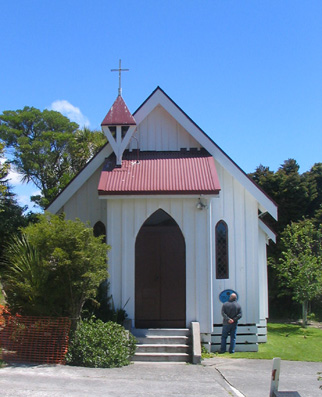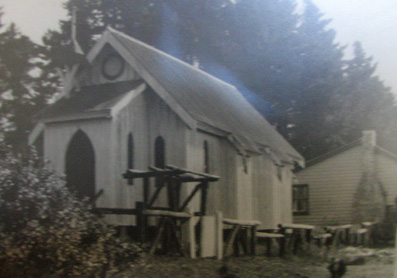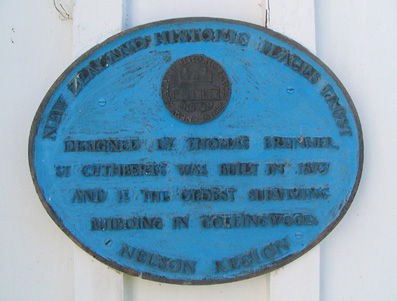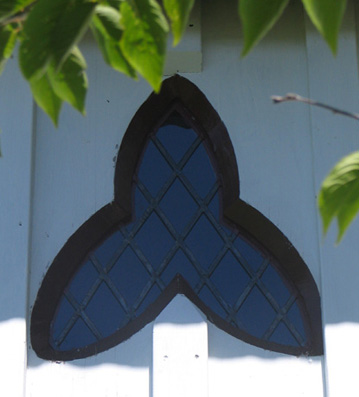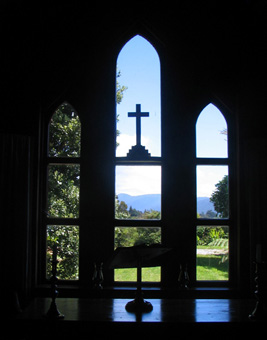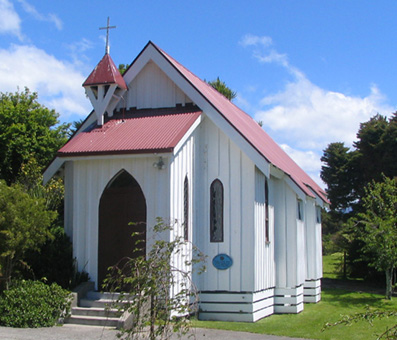The church has an entry porch which is a lean -to structure, surmounted by a small turret bell tower and a plain cross. The double doors, which are not original (those and the windows were given by Bishop Suter and the doors were replaced in the early 1970's), have a single arched window above. The original steps have also been replaced.
The chancel is gabled and has three plain lancet windows at the west end, with a leadlighted trefoil window on each of the side walls.
A gabled vestry on the south side of the nave has decorative detailing in the eaves. Its wall cladding differs from that of the main structure of the church.
The nave is a simple gabled structure with vertical board and batten cladding. Two small bays project from each side of the nave, roofed by a continuous projection of the main roof. Each bay has a trefoil window. Elsewhere lancet windows, some leaded, are used.
The present pews are believed to have come from the Nelson Cathedral, the originals having been badly affected with borer.


